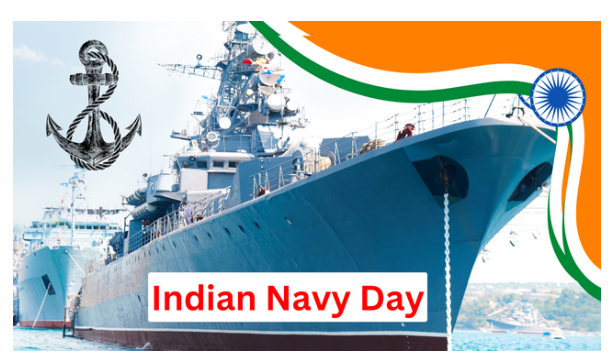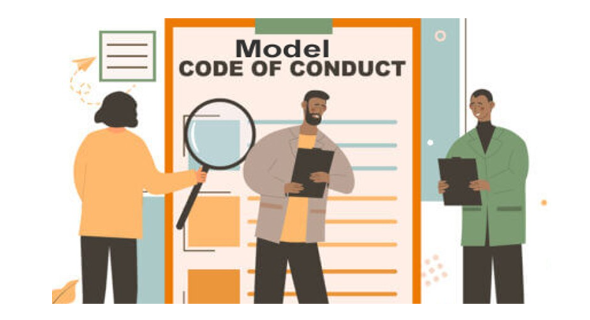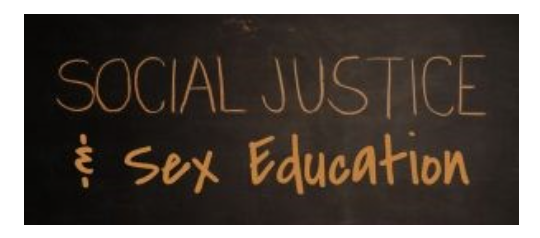Tuesday, 5th December 2023
Women representation in defence forces
In News: Recently, the Prime Minister stated the government's dedication to enhancing the representation of women in the armed forces.
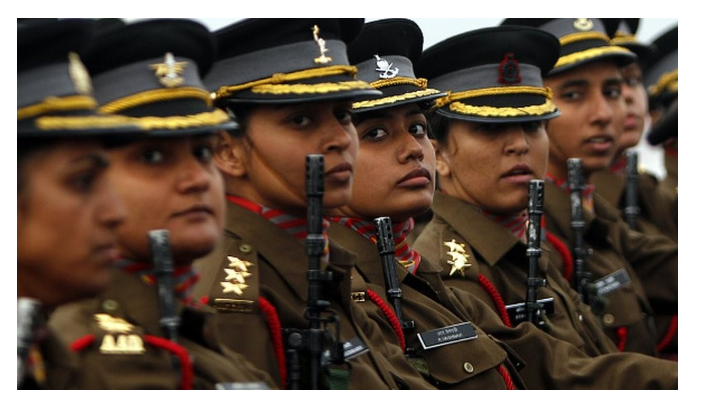
Advancements in Women's Role in the Indian Military: A Comprehensive Overview
Exploring Women's Participation in the Armed Forces
The inclusion of women in the Army, Air Force, and Navy commenced with short-service commission (SSC) roles in 1992, expanding beyond the medical stream.
- A Defining Moment in 2015
- A significant milestone occurred in 2015 when the Indian Air Force (IAF) permitted women to join the fighter stream.
- Legal Mandate for Equality
- In 2020, the Supreme Court mandated permanent commission (PC) for women officers in the Army's non-combat support units, rejecting gender-based limitations.
- Progress in the Army
- Women officers in the Indian Army now hold PC across all ten branches where they are inducted for SSC, allowing them to occupy command appointments on par with male counterparts.
- Navy's Historic Deployments
- The Indian Navy, after a 25-year hiatus, deployed four women officers on warships in early 2021, showcasing a shift in gender roles.
- Diversifying Roles
- In May 2021, the Army inducted women into the Corps of Military Police, marking their entry into the non-officer cadre.
Challenges and Restrictions
- Despite progress, combat arms like Infantry and Armored Corps remain inaccessible to women.
Numerical Growth and Representation
- Over the past six years, the number of women in the military has nearly tripled, reaching a total of 9,118 across the army, navy, and air force.
Global Perspectives
- Considering global trends, the move towards gender-inclusive military roles has gained momentum, as seen in the U.S. in 2013 and the UK in 2018.
Importance of Gender-Inclusive Military
- Highlighting that gender should not impede qualifications, emphasizing technical expertise and decision-making skills over physical strength.
Addressing Recruitment Challenges:
- Advocating for a mixed-gender force to enhance military readiness amid concerns of declining recruitment and retention rates.
- Overcoming Traditions
- Recognizing the need for training to integrate women into combat units and acknowledging the evolving nature of military culture.
Transformative Steps for Women's Leadership in the Military
- Driving Cultural Shifts
- Historically, women were excluded from command roles due to concerns about acceptance among the rank and file.
- Initiating changes in the Army's culture, norms, and values, as well as societal attitudes, is crucial.
- The onus for these transformations rests on the shoulders of senior military and political leaders.
- International Examples
- Several global military forces, including the United States, Israel, North Korea, France, Germany, Netherlands, Australia, and Canada, have successfully integrated women into front-line combat positions.
- These nations serve as examples of effective implementation and acceptance.
- Empowering Equality
- Every woman has the right to pursue her chosen career path and ascend to leadership positions.
- Emphasizing that equality is not just a principle but a constitutional guarantee, it is imperative to create an environment that supports and nurtures the career ambitions of women.
Source: TH
2023 World Malaria Report - Edukemy Current Affairs
In News: The recently published 2023 World Malaria Report from the World Health Organization (WHO) highlights the concerning malaria situation both in India and worldwide.

Key Report Findings of the report
- Global Malaria Landscape
- The 2023 World Malaria Report discloses a worldwide upswing, surpassing pre-pandemic levels with an estimated 249 million cases in 2022.
- Challenges to Global Malaria Response
- Disruptions caused by Covid-19, drug resistance, humanitarian crises, and climate change pose significant threats to global efforts in combatting malaria.
- Twenty-nine countries account for 95% of global malaria cases.
- Malaria Hotspots
- Nigeria, the Democratic Republic of the Congo, Uganda, and Mozambique collectively contribute to almost half of the global malaria cases.
- Nigeria leads with 27%.
- India's Malaria Status
- India, constituting 66% of malaria cases in the WHO South-East Asia Region, faces challenges, including a surge in 2023 linked to unseasonal rainfall.
- Plasmodium vivax accounts for nearly 46% of cases in the region.
- Regional Variances
- Africa bears the highest malaria burden, with 94% of cases and 95% of global malaria deaths in 2022.
- The WHO South-East Asia Region, including India, achieved a 77% reduction in cases and deaths since 2000.
- Impact of Climate Change
- Climate change emerges as a pivotal driver, increasing malaria transmission sensitivity.
- WHO underscores the substantial risk this poses to malaria progress, urging sustainable and resilient responses.
- Global Eradication Goals
- WHO's 2025 and 2030 malaria reduction targets face significant gaps, with a 55% shortfall in incidence reduction and a 53% gap in fatality rate reduction.
- Challenges in Eradication Efforts
- Funding gaps for malaria control increased from USD 2.3 billion in 2018 to USD 3.7 billion in 2022.
- Research and development funding hit a 15-year low at USD 603 million.
- Malaria Vaccine Milestones
- Phased introduction of the WHO-recommended malaria vaccine, RTS,S/AS01, reveals notable progress, with a second vaccine, R21/Matrix-M, recommended in October 2023.
- These advancements are expected to bolster malaria prevention efforts.
- Call to Action
- WHO emphasizes the urgent need for increased resources, enhanced political commitment, data-driven strategies, and innovative tools in the fight against malaria.
- Sustainable and resilient responses aligned with climate change mitigation efforts are deemed crucial for progress.
Global Initiatives
- WHO's Global Malaria Program (GMP)
- Coordinates global efforts for malaria control and elimination.
- Guided by the "Global technical strategy for malaria 2016–2030" with a goal to reduce global malaria incidence and mortality rates by at least 90% by 2030.
- Malaria Elimination Initiative
- Led by the Bill and Melinda Gates Foundation.
- Focuses on diverse strategies, including treatment accessibility, mosquito population reduction, and technology development.
- E-2025 Initiative
- Launched by WHO in 2021.
- Aims to halt malaria transmission in 25 countries by 2025.
Initiatives in India
- National Framework for Malaria Elimination 2016-2030
- Aligned with WHO's strategy to eliminate malaria in India by 2030 and maintain malaria-free zones.
- National Vector-Borne Disease Control Programme
- Addresses vector-borne diseases, including malaria, through prevention and control measures.
- National Malaria Control Programme (NMCP)
- Launched in 1953 with key activities such as insecticidal residual spray, monitoring and surveillance of cases, and patient treatment.
- High Burden to High Impact (HBHI) Initiative
- Initiated in 2019 in four states (West Bengal, Jharkhand, Chhattisgarh, and Madhya Pradesh).
- Focuses on malaria reduction through insecticidal net distribution.
- Malaria Elimination Research Alliance-India (MERA-India)
- Established by the Indian Council of Medical Research (ICMR).
- Collaborates on malaria control research with various partners.
|
UPSC Previous Year Questions Prelims (2010) Q. Widespread resistance of malarial parasite to drugs like chloroquine has prompted attempts to develop a malarial vaccine to combat malaria. Why is it difficult to develop an effective malaria vaccine? (a) Malaria is caused by several species of Plasmodium Ans: (b) |
Source: TH
Tejas Jets and Prachand Helicopters
In News: The Defence Acquisition Council (DAC) has approved acquiring 97 Tejas Light Combat Aircraft (Mark 1A) and 156 Prachand Light Combat Helicopters.
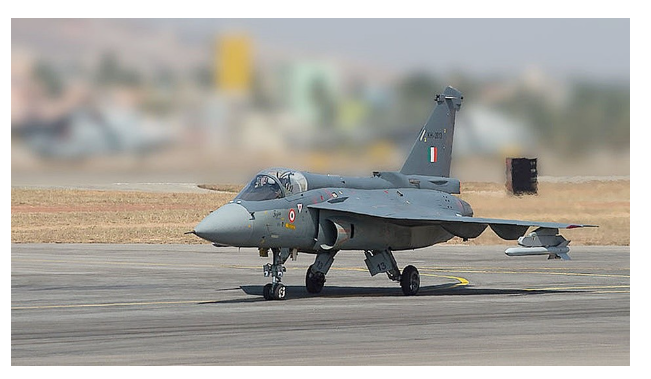
Light Combat Aircraft (LCA): An Overview
- Program Commencement
- Initiated by the Government of India in 1984, the Aeronautical Development Agency (ADA) was established to oversee the LCA program.
- Distinctive Features
- Engineered to accommodate a variety of air-to-air, air-to-surface, and precision-guided weapons, with added capabilities such as air-to-air refueling.
- Tejas Variants
- Tejas Trainer
- A two-seater operational conversion trainer designed to train air force pilots.
- LCA Navy
- Both twin- and single-seat configurations, tailored for carrier-based operations in the Indian Navy.
- LCA Tejas Navy MK2
- Represents the second phase of the LCA Navy variant, indicating iterative advancements.
- LCA Tejas Mk-1A
- An enhanced iteration of the LCA Tejas Mk1, featuring a higher thrust engine for improved performance.
- Tejas Trainer
Light Combat Helicopter (LCH): Overview
- Exceptional Altitude Capabilities
- Distinguished as the world's sole attack helicopter capable of landing and taking off at altitudes of 5,000 meters, carrying substantial weapon loads and fuel.
- Advanced Design Features
- Utilizes radar-absorbing material to minimize radar signature, boasts a crash-resistant structure, and incorporates landing gear for enhanced durability.
- The pressurized cabin ensures protection against Nuclear, Biological, and Chemical (NBC) contingencies.
- Defensive Systems
- Equipped with a countermeasure dispensing system, safeguarding against enemy radar and infrared seekers of hostile missiles.
- Power Source
- Powered by two French-origin Shakti engines, manufactured by the Hindustan Aeronautics Limited (HAL).
Genesis of the Project
- Originating from the necessity felt during the 1999 Kargil war, the LCH project aimed to develop a domestically produced lightweight assault helicopter for precision strikes in diverse Indian battlefield conditions.
- This includes operating in hot deserts, cold high altitudes, and scenarios ranging from counter-insurgency to full-scale battles.
Historical Context
- India previously operated sub-3-ton category French-origin legacy helicopters, Chetak and Cheetah, along with the armed version, Lancer.
- The Mi-17 series, of Russian origin, has also been in use by the Indian Air Force and is slated for phasing out starting 2028.
Project Sanction and Development
- Government approval for the LCH project was granted in October 2006, with the Hindustan Aeronautics Limited (HAL) entrusted with its development.
Operational Significance
- The LCH assumes crucial combat roles, encompassing the destruction of enemy air defense, counter-insurgency warfare, combat search and rescue, anti-tank operations, and counter surface force operations.
Source: TH
Climate Vulnerable Nations - Edukemy Current Affairs
In News: Former Maldives President suggests that Indian companies should consider investing in countries susceptible to climate impacts.

About Climate Vulnerable Nations
- Climate Vulnerable Nations (CVNs), also known as the Vulnerable Twenty (V20), refer to a coalition of countries that are particularly susceptible to the adverse impacts of climate change.
- These nations face severe challenges and risks associated with rising temperatures, changing weather patterns, and the resultant environmental and socio-economic consequences.
- Here are key aspects related to Climate Vulnerable Nations:
- Definition and Criteria
- CVNs are typically characterized by their high vulnerability to climate change impacts despite contributing minimally to global greenhouse gas emissions.
- Vulnerability criteria include factors such as geographical location, low-lying coastal areas, dependence on climate-sensitive sectors (agriculture, fisheries), and limited adaptive capacity.
- Coalition Formation
- The CVN coalition was established to amplify the voices of these vulnerable nations in international climate negotiations.
- It aims to advocate for stronger global commitments to mitigate climate change, provide financial and technical support for adaptation, and address the loss and damage incurred.
- Objectives
- Advocate for global climate action to limit global temperature rise to 1.5 degrees Celsius above pre-industrial levels.
- Secure financial support for adaptation and mitigation efforts, recognizing the disproportionate burden on vulnerable nations.
- Promote sustainable development pathways that integrate climate resilience.
- Challenges Faced by CVNs
- Rising Sea Levels
- Many CVNs are low-lying island nations facing the imminent threat of sea-level rise.
- Extreme Weather Events
- Increased frequency and intensity of extreme weather events, such as hurricanes, cyclones, and droughts, have severe consequences for vulnerable communities.
- Economic Impacts
- Climate change poses risks to key economic sectors like agriculture, tourism, and fisheries, impacting livelihoods.
- Rising Sea Levels
- Leadership and Advocacy
- CVNs actively participate in international climate forums, emphasizing the urgency of climate action and advocating for policies that address the specific needs of vulnerable nations.
- They often lead by example, implementing innovative climate resilience measures and adopting renewable energy solutions.
- Global Initiatives and Support
- Various international organizations and initiatives, including the United Nations and the Green Climate Fund, aim to provide financial and technical assistance to CVNs.
- Developed nations are urged to fulfill commitments under climate agreements to support adaptation and mitigation efforts in vulnerable regions.
- Progress and Collaboration
- CVNs collaborate on research, technology transfer, and capacity-building initiatives to enhance their resilience.
- They play a crucial role in shaping global climate policies and ensuring that the international community acknowledges and addresses the needs of the most vulnerable nations.
- Definition and Criteria
Source: TH
Cyclone Michaung - Edukemy Current Affairs
In News: Heavy rain in Tamil Nadu's capital caused havoc. Union Home assures Chief Minister of full support from the Centre.
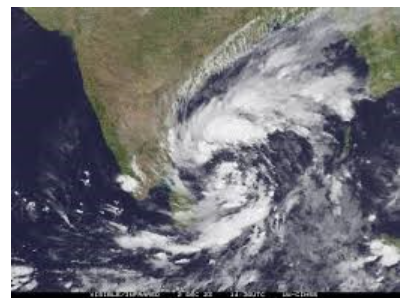
About Cyclone Michaung
- Originating in the South-West Bay of Bengal, Cyclone Michaung has been named following a suggestion from Myanmar, signifying strength and resilience.
- Once fully formed, this cyclone will mark the fourth cyclonic storm in the Bay of Bengal and the sixth cyclone to develop in the Indian Ocean in the year 2023.
Naming of the cyclones
- The World Meteorological Organization (WMO) is responsible for managing rotating name lists specific to each tropical cyclone basin.
- Cyclones in various global ocean basins receive their names from regional specialized meteorological centers (RSMCs) and Tropical Cyclone Warning Centers (TCWCs) within those regions. There are a total of six RSMCs worldwide.
- Member nations of the RSMCs propose names for tropical cyclones, with the Indian RSMC, consisting of 13 nations, suggesting 13 names for cyclones in the region.
- In the past, before the official adoption of naming conventions, tropical cyclones were named based on locations, objects, or the feast days of saints on which they occurred.
- The naming sequence follows a sequential column-wise approach, beginning from the first row of column one and progressing sequentially to the last row in column thirteen.
- Once a name is assigned to a tropical cyclone over the north Indian Ocean, it will not be reused.
- Notably, if a tropical cyclone originates in the south China Sea, crosses Thailand, and emerges into the Bay of Bengal, its name will remain unchanged.
- This system ensures the unique identification of tropical cyclones and prevents the repetition of names over time.
Source: TH
Codex Alimentarius Commission - Edukemy Current Affairs
In News: India has achieved unanimous election to the Executive Committee of the Codex Alimentarius Commission (CAC), representing the Asian region.
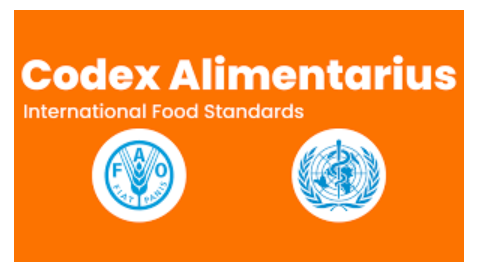
About Codex Alimentarius Commission
- The Codex Alimentarius Commission (CAC) is an international body for food standards jointly established by the Food and Agriculture Organization (FAO) and the World Health Organization (WHO) in May 1963.
- Its primary aim is to safeguard consumer health and ensure equitable practices in food trade.
- Recognition
- The World Trade Organization's (WTO) Agreement on Application of Sanitary and Phytosanitary Measures (SPS) acknowledges Codex standards, guidelines, and recommendations as reference standards for international trade and dispute resolution.
- Membership
- Currently comprising 189 Codex Members, including 188 Member Countries and 1 Member Organization (The European Union).
- India joined the Codex Alimentarius in 1964.
- Codex Standards
- General Standards, Guidelines, and Codes of Practice
- Core texts addressing hygienic practices, labeling, contaminants, additives, inspection & certification, nutrition, and residues of veterinary drugs and pesticides.
- These standards apply broadly to various products and product categories.
- General Standards, Guidelines, and Codes of Practice
- Commodity Standards
- Specific standards for particular products, though Codex increasingly develops standards for broader food groups.
- Regional Standards
- Standards formulated by Regional Coordinating Committees, applicable to their respective regions.
|
UPSC Previous Year Questions Prelims (2010) Q. As regards the use of international food safety standards as reference point for the dispute settlements, which one of the following does WTO collaborate with? (a) Codex Alimentarius Commission Ans: (a) |
Source: PIB
World AIDS Day 2023 - Edukemy Current Affairs
In News: Globally observed on December 1st annually, World AIDS Day aims to raise awareness about Human Immunodeficiency Virus (HIV) and commemorate those affected by it.
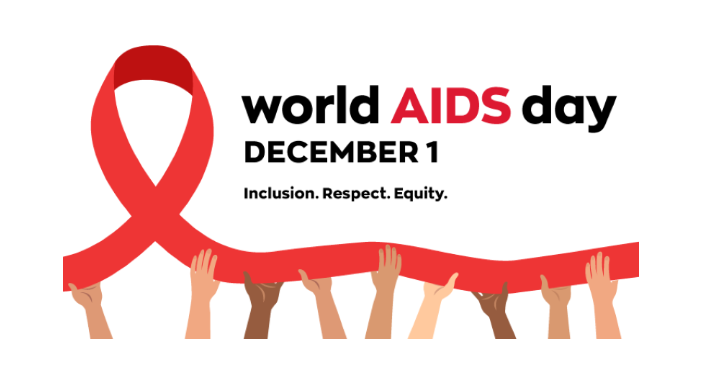
Unveiling the Realities of HIV/AIDS
- Nature of the Infection
- Human Immunodeficiency Virus (HIV) is an infection that specifically targets and weakens the body's immune system.
- Acquired Immuno Deficiency Syndrome (AIDS) is the advanced stage of HIV infection, occurring when the immune system is severely compromised.
- Target Cells and Immune System Impact
- HIV primarily attacks CD4 cells, a type of White Blood Cell (T cells) responsible for detecting anomalies and infections in the body.
- The virus multiplies and destroys these CD4 cells, causing substantial damage to the immune system.
- Once contracted, HIV cannot be eradicated from the body.
- CD4 Count and Immune System Health
- In a healthy individual, the CD4 count ranges from 500 to 1600.
- However, in an HIV-infected person, this count can plummet to as low as 200, signifying significant immune system impairment.
- Transmission Routes
- HIV spreads through direct contact with certain body fluids from an infected person with a detectable viral load.
- These fluids include blood, semen, rectal fluid, vaginal fluid, and breast milk.
- Symptoms and AIDS Development
- After HIV progresses to AIDS, initial symptoms may include unexplained fatigue, fever, genital or neck sores, pneumonia, among others.
- Global and Indian Prevalence
- Globally, an estimated 39 million people are living with HIV. In India, the figure is 2.4 million.
- In 2022, there were 1.3 million new HIV infections worldwide, with 63,000 reported in India.
- AIDS-related deaths in 2022 totaled 650,000 globally and 42,000 in India. Many of these infections are preventable and treatable.
UPSC Previous Year Questions
Prelims (2013)
Q . Which of the following diseases can be transmitted from one person to another through tattooing?
- Chikungunya
- Hepatitis B
- HIV-AIDS
Select the correct answer using the codes given below:
(a) 1 only
(b) 2 and 3 only
(c) 1 and 3 only
(d) 1, 2 and 3
Ans: (b)
Source: TH
Dr. Rajendra Prasad - Edukemy Current Affairs
In News: The President of India recently honored the birth anniversary of Dr. Rajendra Prasad, the inaugural President of India, by paying heartfelt tributes.
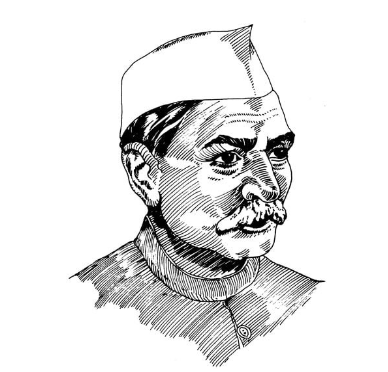
Dr. Rajendra Prasad: A Notable Life
- Early Life and Birth
- Born on December 3, 1884, in Zeradei, Siwan, Bihar, Dr. Rajendra Prasad's journey began in a small town.
- Involvement with Mahatma Gandhi
- During the Champaran Satyagraha of 1917 in Bihar, he collaborated closely with Mahatma Gandhi, marking the early chapters of his involvement in India's struggle for independence.
- Resistance Against Injustices
- Dr. Prasad vehemently opposed the Rowlatt Act of 1918 and strongly reacted to the Jallianwala Bagh massacre in 1919.
- His call for non-cooperation in Bihar aligned with Gandhi's broader non-cooperation movement.
- Leadership in Salt Satyagraha
- A pivotal figure in the Salt Satyagraha of 1930 in Bihar, Dr. Prasad's active participation led to his imprisonment, showcasing his commitment to the cause.
- Political Affiliation and Growth
- Officially joining the Indian National Congress in 1911 during its annual session in Calcutta, Dr. Prasad's political journey began to take shape.
- Ministerial Role and Slogan
- In 1946, he assumed the position of Minister of Food and Agriculture in the Interim Government, where he championed the slogan "Grow More Food."
- Presidency and Record
- Elected as India's first President on January 26, 1950, Dr. Rajendra Prasad held this esteemed position until May 13, 1962, setting a record as the longest-serving President in Indian history.
- Bharat Ratna and Literary Contributions
- Honored with the Bharat Ratna in 1962, Dr. Prasad's contributions extended beyond politics, encompassing notable literary works such as "Satyagraha at Champaran," "India Divided," and his autobiography, "Atmakatha."
- Final Departure
- Dr. Rajendra Prasad passed away on February 28, 1963, leaving behind a legacy of leadership, resilience, and unwavering dedication to India's freedom struggle.
|
UPSC Previous Year Questions Prelims (2010) Q. Consider the following statements:
Which of the statements given above is/are correct? (a) 1 only Ans: (b) |
Source: PIB
Kra Isthmus - Edukemy Current Affairs
In News: The Kra Isthmus, situated on the Malay Peninsula in Thailand, has garnered strategic significance owing to a suggested transit route that has the potential to link the Andaman Sea with the Gulf of Thailand.
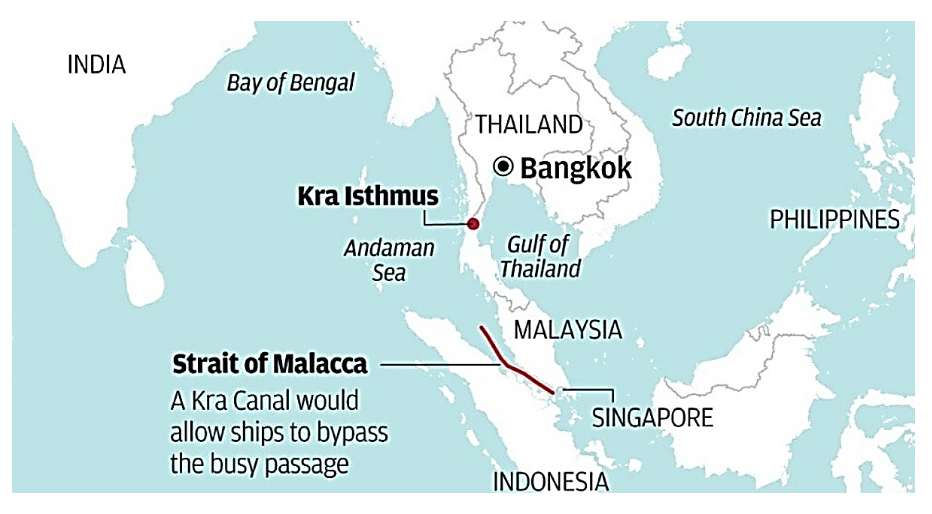
About Kra Isthmus
- The isthmus, with a width of merely 44 km at its narrowest, holds the potential to impact global trade and security, akin to the historical significance of the Suez and Panama Canals.
- Recently, the Thai Prime Minister officially introduced a multi-billion-dollar land-bridge project.
- An isthmus is a slender land strip connecting two larger masses and is surrounded by water on two sides.
- Situated in Thailand, the Kra Isthmus represents the narrowest segment of the Malay Peninsula, bordered by the Andaman Sea to the west and the Gulf of Thailand to the east.
Source: TOI
Enhancing the capacity of the Indian state
In News: It is pertinent to delves into the paradoxical nature of the Indian state, contending with the dual challenge of its expansive reach while encountering limitations in its capacity.
Comparing the Indian State with Others
- The scale of the Weberian state in India is notably compact.
- Within the G-20 group, it holds the distinction of having the fewest civil servants per capita.
- India's public sector's contribution to overall employment, standing at 5.77%, is only half of what is observed in Indonesia and China and approximately one-third of the figure in the United Kingdom.
- In terms of central government personnel, India trails significantly with approximately 1,600 per million, a stark contrast to the 7,500 in the United States.
- Moreover, across various professions—doctors, teachers, town planners, police, judges, firefighters, inspectors for food and drugs, and regulators—the per capita figures in India are the lowest even when compared to countries at a similar stage of development.
Challenges Facing the Indian State
- Outsourcing Services due to Inadequate State Capability
- The Indian state, with relatively small metrics like the tax-GDP and public expenditure-GDP ratios, faces challenges in providing public goods, welfare payments, and justice system services due to scarcity rather than surplus.
- As a result, essential services like primary health are often outsourced.
- Perverse Incentives and Skill Gap
- Perverse incentives within public institutions and a skill gap among officials hamper the ability of political executives and civil services to formulate and implement sound policies.
- Extreme Concentration of Powers
- Policy-making and implementation powers are extremely concentrated in India, fostering a culture of mistrust and reducing accountability for poor implementation due to restrictions on frontline personnel.
- Technocratic Gap
- Top policymakers lack technocratic skills to manage the complexities of an increasingly sophisticated economy.
- As a result, consultancy firms are frequently hired by the Centre and States to address economic, financial, and technical matters.
- Lack of Strength of Staff with Market Watchdogs
- Market watchdogs like SEBI and the RBI suffer from a shortage of professional staff.
- SEBI, for instance, has around 800 professionals compared to over 4,500 experts in the U.S. Securities and Exchange Commission.
- Weak Oversight and Audit Practices
- Narrowly scoped audits by the Comptroller and Auditor General of India, along with hindsight-based decision-making by oversight agencies like the Central Vigilance Commission and the Central Bureau of Investigation, lead to delayed procurement and contractual disputes.
- Problematic Appointment of Retired Officers
- The appointment of retired officers to regulatory bodies and tribunals poses challenges, making civil servants susceptible to political influence and compromising in-service decisions.
- Reduced Efficacy of the Public Sector
- The political economy of the public sector undermines its efficacy, with performance-linked pay and incentive schemes proving less effective than in the private sector.
- The disproportionately high public sector salaries, especially after Pay Commissions, contribute to corruption and make government jobs excessively lucrative.
The Path Forward
- Decouple Policymaking and Implementation
- Drawing lessons from countries like Australia, Malaysia, and the United Kingdom, segregating policymaking and implementation responsibilities accelerates execution and fosters innovation.
- The model of the National Highways Authority of India, where policy decisions are centralized, while execution is delegated, has proven effective in reducing delays and cost overruns.
- Delegate Financial and Administrative Powers
- Breaking the cycle of poor delegation and deficient state capability involves empowering frontline functionaries or street-level bureaucrats with clearly defined financial and administrative powers.
- This approach can enhance efficiency.
- Normalize the Lateral Entry Culture
- Incorporating a systematic and regular lateral entry mechanism at mid and senior levels can address the size and technocratic gap in civil services.
- Competent officers from non-IAS services should have equal opportunities for high-level positions, supported by subject-specific training under Mission Karmayogi.
- Sensitize Regulatory Agencies
- To curb the default mode of appealing against arbitration and court awards, oversight agencies need sensitization to understand the context of policy decisions.
- Factors such as the costs associated with actual decisions and their alternatives should be considered.
- Increase the Retirement Age
- Elevating the retirement age to 65 for all government jobs and establishing an absolute upper limit for appointments can mitigate susceptibility to political manipulation arising from the appointment of retired officers to regulatory bodies.
- Reform Public Sector Employment
- Ensuring that the public sector attracts intrinsically motivated individuals requires aligning risk and skill-adjusted pay with job security and better working conditions.
- Modest pay raises by future Pay Commissions and a reduction in the upper age limit for government jobs are potential solutions.
- Create Jobs in the Private Sector
- Promoting high economic growth to generate lucrative job opportunities in the private sector can diminish the allure of government jobs for financially motivated individuals.
- This shift has the potential to reduce corruption and attract socially-driven individuals to government service.
|
UPSC Previous Year Questions Mains (2020) Q. “Institutional quality is a crucial driver of economic performance”. In this context suggest reforms in the Civil Service for strengthening democracy. |
Source: TH
Share the article
Edukemy’s Current Affairs Quiz is published with multiple choice questions for UPSC exams
MCQ
Get Latest Updates on Offers, Event dates, and free Mentorship sessions.

Get in touch with our Expert Academic Counsellors 👋
FAQs
UPSC Daily Current Affairs focuses on learning current events on a daily basis. An aspirant needs to study regular and updated information about current events, news, and relevant topics that are important for UPSC aspirants. It covers national and international affairs, government policies, socio-economic issues, science and technology advancements, and more.
UPSC Daily Current Affairs provides aspirants with a concise and comprehensive overview of the latest happenings and developments across various fields. It helps aspirants stay updated with current affairs and provides them with valuable insights and analysis, which are essential for answering questions in the UPSC examinations. It enhances their knowledge, analytical skills, and ability to connect current affairs with the UPSC syllabus.
UPSC Daily Current Affairs covers a wide range of topics, including politics, economics, science and technology, environment, social issues, governance, international relations, and more. It offers news summaries, in-depth analyses, editorials, opinion pieces, and relevant study materials. It also provides practice questions and quizzes to help aspirants test their understanding of current affairs.
Edukemy's UPSC Daily Current Affairs can be accessed through:
- UPSC Daily Current Affairs can be accessed through Current Affairs tab at the top of the Main Page of Edukemy.
- Edukemy Mobile app: The Daily Current Affairs can also be access through Edukemy Mobile App.
- Social media: Follow Edukemy’s official social media accounts or pages that provide UPSC Daily Current Affairs updates, including Facebook, Twitter, or Telegram channels.

